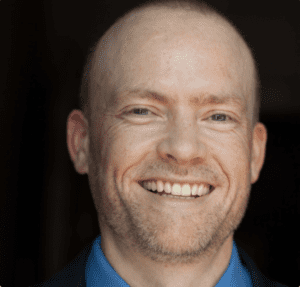This is an exciting update on OCD research conducted by Dr. Jamie Feusner (Chief Medical Officer of NOCD, Professor of Psychiatry at UCLA, Director of the UCLA OCD Intensive Treatment Program) and Dr. Alex Leow (Scientific Advisor at NOCD, Associate Professor of Psychiatry and Bioengineering at the University of Illinois College of Medicine, Attending Physician at the University of Illinois Hospital). Here is Dr. Feusner discussing the research.

By Dr. Jamie Feusner
If you quiz random people on the street– as Jimmy Kimmel likes to do on his late-night show– and ask them what OCD is, they will mostly say it’s a quirky obsessive fixation with cleanliness and order. They think of Howard Hughes in the 2004 blockbuster The Aviator, or Joan Crawford in the 1981 cult classic Mommie Dearest. Heaven forbid somebody touch Hughes’ food or use wire hangers at Crawford’s house.
Outside of Hollywood, early studies of obsessive-compulsive disorder (OCD) patients suggested that contamination fears are the most prevalent subtype in people with OCD seeking behavioral therapy. A later, larger study of more than 2,000 people suggested that obsessions leading to checking (typically caused by obsessional fear of harm or doubt) are more common than contamination fears (Ruscio et al. 2008).
Obsessions are unwanted, intrusive thoughts that generate intense anxiety. Contamination obsessions center around a fear of dirt or germs, getting sick, or infecting someone else. Harm obsessions involve uncertainty about whether or not one might or already has hurt oneself or others. The feared harm might be of a violent, sexual, religious, or intimate nature, to name only a few.

The results of our recent study of over 4,000 people with OCD in 90 countries using the NOCD smartphone app validates this previous study, defying the conventional portrayal of OCD as being most commonly related to contamination and cleaning. Samples this large are rare in OCD studies, and enable researchers to make conclusions with greater confidence. The study was presented at the American College of Neuropsychopharmacology 57th Annual Meeting in December 2018.
Our research shows that Harm OCD is by far the most pervasive type of OCD. It’s 66% more common than contamination fears. Our research also supports the case for obsessions about sexual orientation, sexuality, and relationships also being relatively more common than has appeared in previous literature. People with OCD may have been reluctant to share the truth with their therapists, or even researchers in person, perhaps because of shame, fear of being misunderstood as suicidal or homicidal and being hospitalized, fear of being labeled a sociopath, or fear of being judged negatively by others for thoughts concerning their sexual orientation or their relationship. OCD patients might have been comfortable revealing their true obsessions through the NOCD app because they were allowed to do so anonymously.
The NOCD app offers tools for planning and completing exposure and response prevention (ERP) therapy. Over 6,000 words related to obsessions were pulled from de-identified obsession data entered by NOCD users in the app. This means we were able to study a large sample of data entered by NOCD users without seeing any of their personal information.

Key Takeaways From Our Study
Our study analyzed not only the frequency of different types of obsessional thoughts but the relationships between these obsessional words in the English language in order to understand underlying semantic (“meaning”) themes.
- Most OCD obsessions are linked semantically by the theme of harm, even ones related to contamination fears.
- Sexual and relationship types of obsession are very common and appear segregated from OCD themes related to harm and contamination.
- People might be more comfortable sharing their true obsessions through the app thanks to anonymity.
- Although OCD patients may perceive that they have multiple different obsessions because they’re triggered by different things, the obsessions are typically variations of the same theme.
- In recognizing this, patients may be able to apply the same techniques they learned to overcome one obsession, with any “new” obsessions.
Research Methodology
We used anonymous and de-identified data from 4,073 people, ages 17 and older living in 90 countries, who identified themselves as having OCD, from the words they freely entered into the NOCD app describing their obsessions.
Next, we took this large ad hoc dataset of obsession-related words and analyzed their clustering relationships using natural language processing. We analyzed 100 dimensions of latent relationships through these algorithms – far more powerful for uncovering hidden connections than the human brain can tackle.
Eye-Popping Findings
Individuals entered words related to harm (e.g. kill, die, hurt) almost twice as often as words related to contamination (e.g. disease, germs, sick) and 10 times more than words related to symmetry or order (e.g. right).
Our algorithm grouped the 25 most commonly entered OCD words into clusters to visually display the semantic relationships among the words. One major cluster centered on the theme of harm. A branch of that cluster centered on the theme of contamination while another branch (although more segregated) centered on the theme of sexual and relationship issues.

This suggests that although the most common OCD obsessions involve harm, contamination obsessions have links to harm through their underlying meanings.
These findings could have important implications for what the medical community must do to help remove the shame and stigma of having OCD. In addition, it may influence how treatment is approached since many obsessions have closely related underlying meanings.
Overcoming Harm Obsessions
Overcoming Harm OCD might seem impossible for some. As soon you feel you have overcome one obsession another comes to take its place. The thought of poking your eye turns into stabbing a stranger on the bus, which then turns into losing important paperwork. You may believe you have multiple obsessions because they’re triggered by different things. But the seemingly disparate obsessions are typically variations of the same theme and are actually all related.
Imagine a group of icebergs the size of Mount Rushmore floating in the ocean. From the surface of the water, you see five or six different mountains of frozen water. But when you dive below the surface, you see those mountains of ice are actually peaks in a single massive island of ice the size of Hawaii.
Now imagine the different OCD obsessions you’ve had being each one of the peaks of the giant iceberg. But like the peaks on the iceberg, they’re all connected to one underlying obsession or compulsion. They’re all part of one large iceberg but just a different peak on it.

Conclusion
This iceberg analogy suggests the possibility that once you learn to overcome a specific Harm OCD symptom, you can use the same approach on all Harm OCD symptoms. When you encounter a new, unexpected obsession or compulsion, you can use the ERP tools that have worked previously for you to deal with the new symptom. This may also help you recognize that if a new concern comes up and you wonder if it’s a “real” concern or OCD, chances are, if it’s a similar theme, it is just another peak from the same iceberg.
From the NOCD Team
If you are dealing with harm obsessions, contamination obsessions, or any other OCD symptoms, you’re not alone. NOCD is a massive community of people around the world learning how to cope with intrusive thoughts, decrease their reliance on compulsive behaviors, and feel better.
Whether you want to use ERP tools, get guidance in your toughest moments, or just have a safe place to discuss what’s on your mind, you can try the free NOCD app now:
Why is the NOCD Team working on public health studies?
Our mission is to help people feel better. While we’re always working to provide the best tools given the treatment options available today, another aspect of this mission is to support the best researchers working today through responsible application of de-identified NOCD data.
Disclaimer
The study was conducted by NOCD’s Chief Medical Officer (Feusner) and a member of the NOCD Scientific Advisory Board (Leow), along with other members of the NOCD team. No payment was exchanged for this data.
If you or someone you know is struggling with OCD, schedule a free call today with the NOCD clinical team to learn more about how a licensed therapist can help. ERP is most effective when the therapist conducting the treatment has experience with OCD and training in ERP. At NOCD, all therapists specialize in OCD and receive ERP-specific training.


